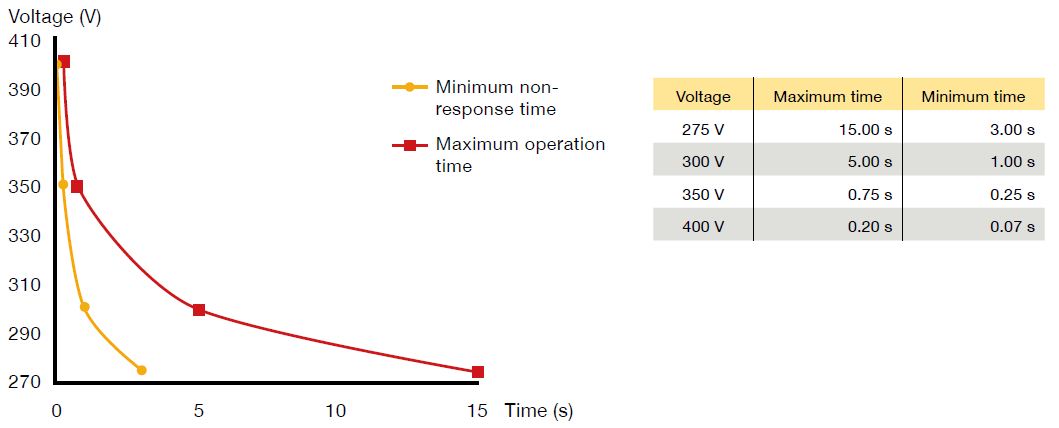Permanent overvoltages are voltage surges above 10% of the nominal value of the distribution network which are maintained for several cycles or permanently. They are normally caused by a defective connection of the neutral or by a failure in the transformation centre.
Overvoltage protectors help to keep the installations safe, disconnecting the power supply just in time through a cutting device.
For years, there have been regulations and specific rules for the different regions that regulate or prescribe the use of this type of protectors in low voltage installations. In addition, there is a standard, UNE-EN 50550, which regulates the characteristics of this type of devices, called POP (Power frequency Overvoltage Protector), to guarantee its quality.
The standard specifies a series of requirements for manufacturers and highlights the compliance with the attached trigger curve chart.
Nowadays, some manufacturers offer shunt releases as overvoltage protectors and non-timed equipment, or devices with different timings than those marked by the UNE-EN 50550, that can produce problems in the installations such as:
• False triggering: The overvoltage protector cuts in before the minimum non-response time, with subsequent operative inconvenience.
• Late triggering: Cut-in occurs above the maximum operating time and can cause irreparable damage to the equipment.
Aplicaciones Tecnológicas manufactures intelligent equipment that manage the cut-in trigger element in a micro controlled way, adapting correctly the times to the standard. Our products are tested in independent laboratories with the specifications of the standards and offer all the guarantees from a leading company.
